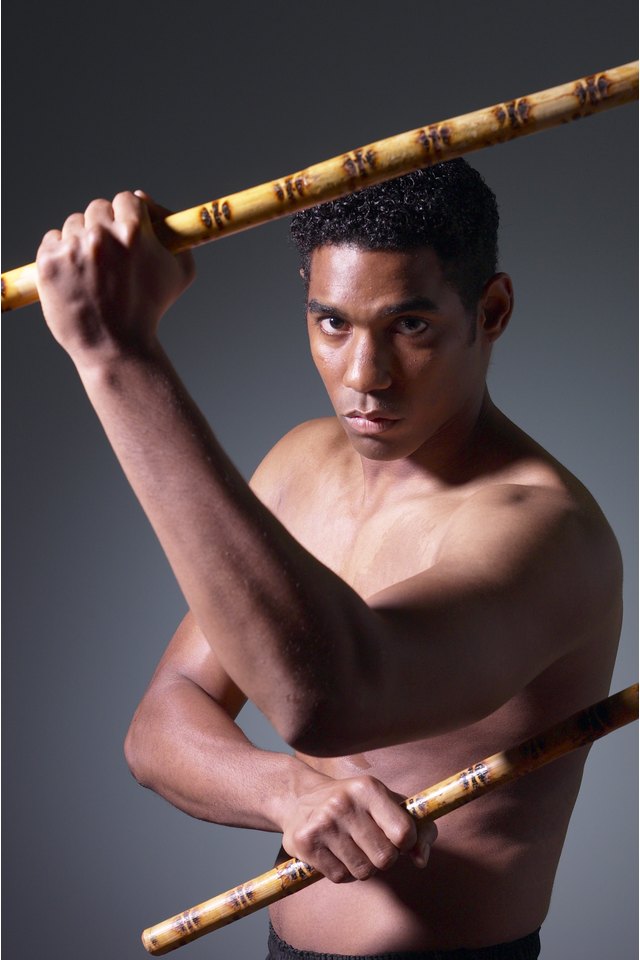Aikijutsu Vs. Jujitsu

Jujitsu and the derivative aikijutsu are practical martial arts, as opposed to sports like judo or aikido, or wellness exercises like yoga or tai chi. Aikijujitsu is an elaboration of jujitsu, to implement more aggressive techniques in what originated as a samurai’s last resort. aikijutsu stems from the original incarnation of aujitsu, as opposed to the more mainstream version throughout Western countries known as Gracie Jujitsu. all forms of jujitsu, including aikijujitsu, concentrate primarily on grapples, throws, joint manipulations, and the use of an opponent’s momentum against him.
The Purpose of Jujistu
For the ancient samurai that developed the martial art, Jujitsu was not a means to stay in shape or get the last word in a bar argument. It was their “break glass in case of catastrophe” series of techniques they employed in the event they fell off their horse, lost their weapon, or both. In such situations, just as important as his position and defensive abilities, is a fallen samurai’s state of mind. Primary fulcrums of jujitsu include awareness, posture, and breathing techniques in addition to preparation and preemptive striking. Movement was minimized in the original practice of jujitsu, as feudal samurai were heavily armored. Later developments in jujitsu included techniques with a wider range of movement.
The Distinction of Aikijutsu
Aikijutsu, or aiki-jujitsu, differs from jujitsu by implementing a more offensive approach while borrowing from several jujitsu styles. As explained by the Aikijutsu Academy, students learn “an early neutralization of an attack” leading to an offensive strike. However, the practice of aikijutsu may seem only slightly different, or even indistinguishable from jujitsu to the untrained eye, as aikijutsu relies just as heavily on throws, joint manipulations, timing, and the use of an opponent’s momentum.
Aikijutsu Isn’t Just Another Style
Aikijutsu has an array of subsidiary styles. Daito-ryu Aiki-jujutsu, for example, combines vital area strikes and other daito-ryu techniques with a jujitsu foundation. Senso Aikijujutsu, on the other hand, is a contemporary style that means to update the original jujitsu style with a more relevant martial art. Senso aikijujutsu takes into account current weaponry and settings, so practices are translatable to everyday experience. Another aspect of senso aikijujutsu is its synthesis of diverse jujitsu styles, rather than a single focus. Typically, a jujitsu style has a concentration on one of the primary aspects of jujitsu, such as throws or grapples. Gracie Jujitsu focuses almost entirely on throws, dodges and escapes. It relies heavily on timing and the opponent’s momentum, as opposed to speed and strength.
Fitness and Food Conditioning
Jujitsu and its cousin aikijutsu are not workout regimens. Instead, you want to optimize your exercise and eating to better perform this martial art. Nicolas Gregoriades, a jujitsu instructor, recommends eating omega-3s; vitamin C and D3; creatine; green foods; B-vitamins; digestive enzymes; green tea extract; hyaluroni acid and nootropics to help your body through the training process. Gregoriades also recommends swimming, resistance training with equipment, gymanstic and body-weight training, and yoga to condition the body for jujitsu training. Always consult your physician before making any changes to your diet.
References
- Stanford Jujitsu Club: General Information About Jujitsu
- Sensokan Dojo Indianapolis: Sensokan Dojo History
- Gracie Jiu- Jitsu Academy: The Origin of Jiu-Jitsu
- Aikijutsu Academy: History
- Jiu Jitsu: The Essential Guide to Mastering the Art; Hans-Erik Petermann; 2006
- Jujitsu Brotherhood: Ten Essential Supplements for Jiu-Jitsu Fighters
Writer Bio
Skyler White is an avid writer and anthropologist who has written for numerous publications. As a writing professional since 2005, White's areas of interests include lifestyle, business, medicine, forensics, animals and green living. She has a Bachelor of Arts in anthropology from San Francisco State University and a Master of Science in forensic science from Pace University.
